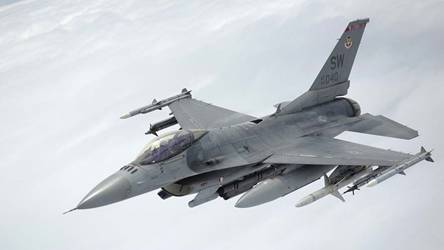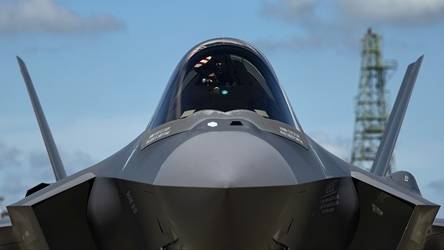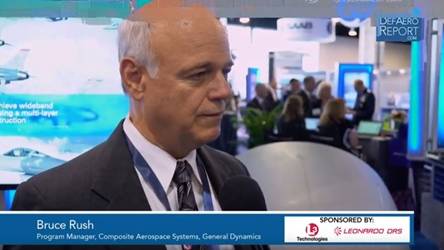
The General Dynamics Mission Systems facility in Marion, Virginia, leads the industry in the development of little-known but highly essential aircraft components: Radomes. In airborne systems, radomes are protective shells covering radar, navigation and satellite system antennas mounted on the aircraft. Protecting these systems without limiting them is key for the proper functioning of weather, communications and navigation systems in both military and commercial applications in addition to detection, fire-control, jamming, and other electronic warfare systems found in military aircraft. Radomes often serve as the nose cone of aircraft or may be found on the dorsal surface, side, or belly of the fuselage and sometimes even the tail or wingtips.
Don’t be fooled: These shells are more than just covers. They protect the antennas on the exterior of aircraft from physical damage, as well as from electromagnetic interference, while still allowing transmissions with specific frequencies to pass through.
Developing a structure that is protective, while also being aerodynamic and transparent enough for successful transmissions is an ongoing challenge. General Dynamics engineers have a successful legacy of creating world-class radomes, having produced over 65,000 military and commercial radomes for more than 40 different kinds of aircraft. With more than seven decades of experience manufacturing and testing radomes, General Dynamics also has an eye on the future needs of military and commercial customers, and is remaining at the forefront of innovation in the industry. Our engineers embrace this challenge to continue innovating as we look to apply our leading military-grade technology into the commercial aircraft of the future.
ADVANCING ALONGSIDE THE MODERN WARFIGHTER
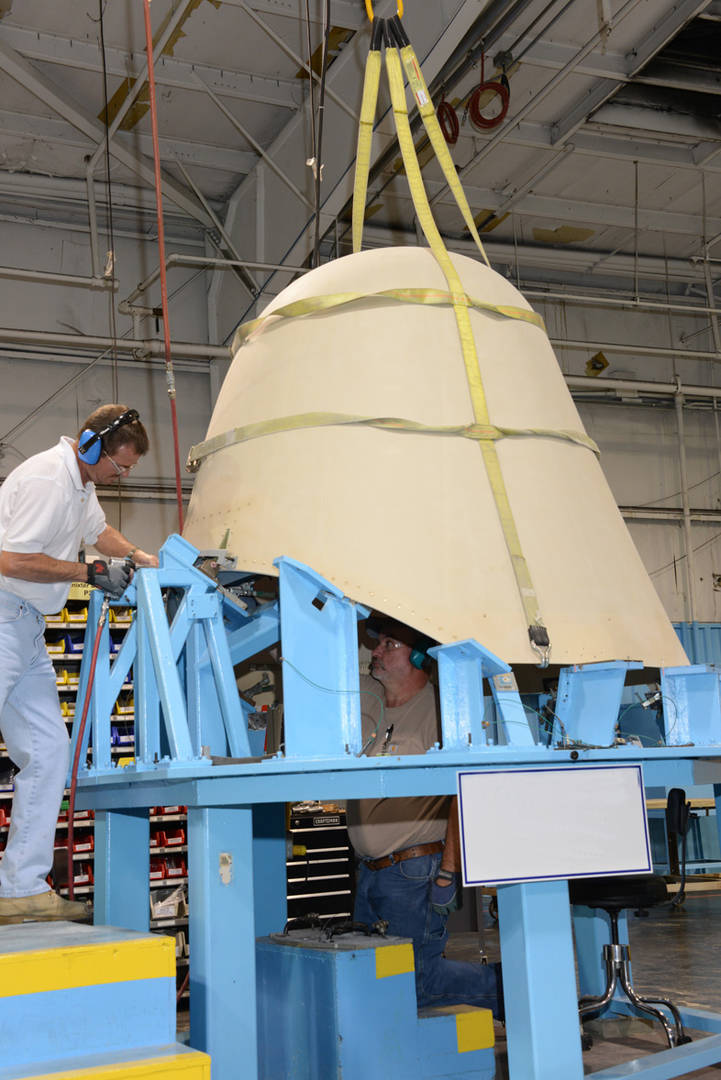
Radomes are used to protect the antennas on the exterior of aircraft from physical damage, as well as from electromagnetic interference, while still allowing transmissions with specific frequencies to pass through.
Engineers at the Marion facility began developing high-performance radomes for military aircraft in 1945, immediately following World War II. The original iterations of these radomes were crafted from laminated wood. Our radomes have come a long way since these early wooden models, says Jared Strait, the Senior Director for Composite Solutions.
“As antennas and targeting systems evolve, our goal is to make sure the materials evolve along with them,” said Strait.
Today’s high-performance wide-band radomes are designed for use with state-of-the-art Active Electronically Scanned Array (AESA) antenna technology used in modern military radar systems where “wide band” means that the radar system operates with a broader footprint in the electromagnetic spectrum. Over the last two decades, military customers have transitioned from mechanically steered arrays to these active, electronically steered AESA systems, which present their own unique set of challenges.
As arrays become smaller and more powerful, so too must the radomes that protect them. General Dynamics engineers have worked to develop radomes with wider bandwidths to accommodate the increased functionality of modern AESA radars, and now boast a proven record of success in the manufacturing and development of wide band radomes for military use.
OVERCOMING CHALLENGES IN RADOME DEVELOPMENT
Developing radomes is a highly complex design process involving size, weight, environmental and aerodynamic considerations, as well as electromagnetic functionality. Engineers have to use materials that are transmissive to specific frequencies, but able to block unwanted signals.
“In layman's terms… I’ve got an antenna, and I’m going to put something in between my antenna and the rest of the world,” said Strait. “Ideally, you want your antenna to transmit and receive on the frequency bands it’s interested in with as little interference as possible.”
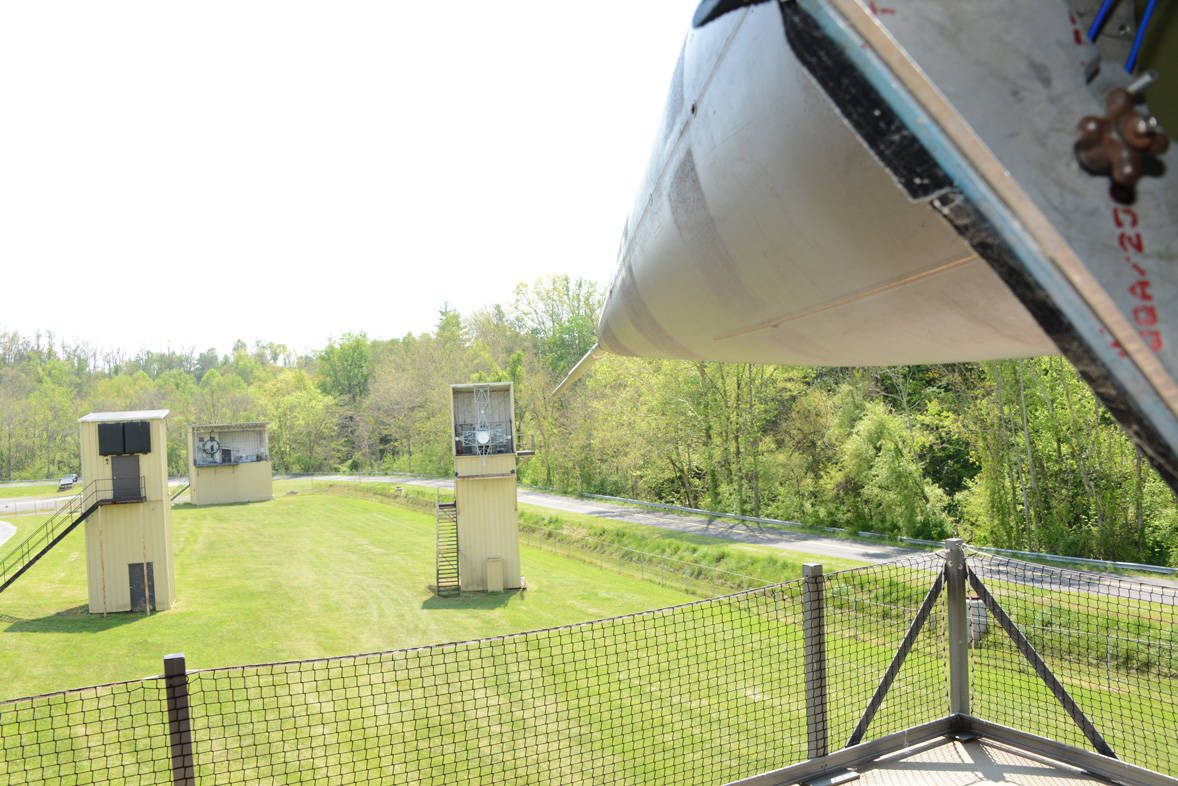
Radio Frequency ranges in Marion, VA are the most comprehensive qualification testing facilities in the field.
Materials such as metal or graphite are too opaque to be useful, Strait said, while fiberglass or quartz-like materials are transparent enough to transmit signals and durable enough to keep the antenna protected from a variety of damage.
Marion’s indoor and outdoor Radio Frequency (RF) ranges are the most comprehensive qualification testing facilities in the field, allowing engineers to evaluate the characteristics of their radomes which are key for maintaining the radar’s performance. Other testing for these radomes includes characteristics important in the aircraft environment such as mechanical shock and vibration, fatigue, lightning and other environmental stressors.
These are just a few of the many design and development considerations General Dynamics engineers have to keep in mind to meet the size, stealth and power requirements of today’s military and commercial aircraft. As the aircraft capabilities evolve and modernize, the radomes used must evolve with them.
ANTICIPATING THE FUTURE OF COMMERCIAL USE

General Dynamics is rising to the challenge of adapting military radomes for commercial use.
Military customers aren’t the only beneficiaries of the innovation at General Dynamics: Modern commercial passengers can enjoy the latest blockbuster film or live baseball game during their flight in part because of the in-flight entertainment and connectivity (IFEC) radome on their plane’s fuselage.
Our engineers primarily design radomes that cover multiple frequency bands for Boeing and other aircraft OEMs and IFEC system providers, including weather and connectivity radomes used for both domestic and international commercial flights. That portfolio may be expanding. Currently, commercial aircraft for the most part use the traditional model of mechanically steered arrays, but that is rapidly changing, according to Strait.
Strait said the commercial industry is beginning to follow in the footsteps of the military, transitioning to low-profile antennas for satellite communication systems and AESA radars. He said this will present its own challenges — such as how to develop radomes for smaller and smaller arrays that also allow for more complex and wide band transmission capabilities — but General Dynamics is well-equipped to fill these capability gaps for the future commercial customer.
“Because of our military history, we've solved a lot of these unique challenges already,” Strait said. “This is going to give us an advantage when the commercial market comes to those challenges.”
General Dynamics engineers have built a reputation for success in radome design and manufacturing, and they are ready to rise to the challenge of adapting military radomes for commercial use, Strait said.
“What we're good at doing is solving the complex challenges of higher performance and more highly constrained radar and communications systems,” said Strait. “In a nutshell, that’s what we're good at doing, and we've always been good at doing it.”
About our Radome Capabilities:
General Dynamics has over 70 years of experience designing and producing a wide array of radomes for both military and commercial platforms, including aircraft nose, wing, tail, fuselage and pods. Radome applications include fire control, weather, data link, SATCOM, electronic counter-measures, electronic warfare and other specialized uses.

